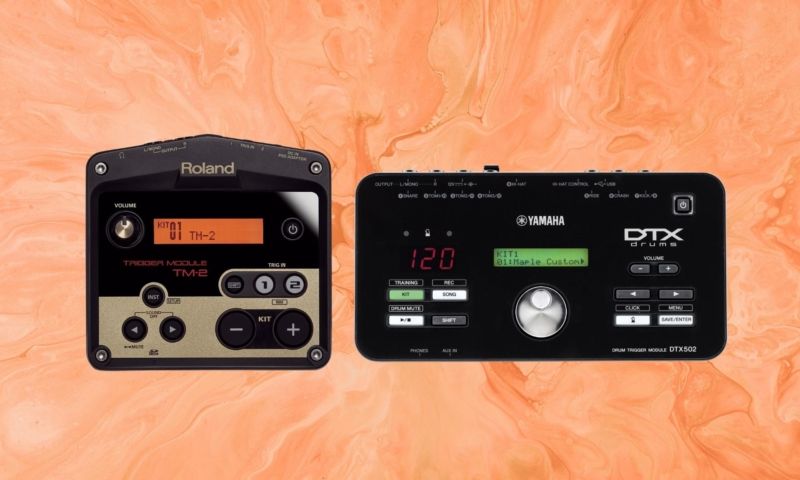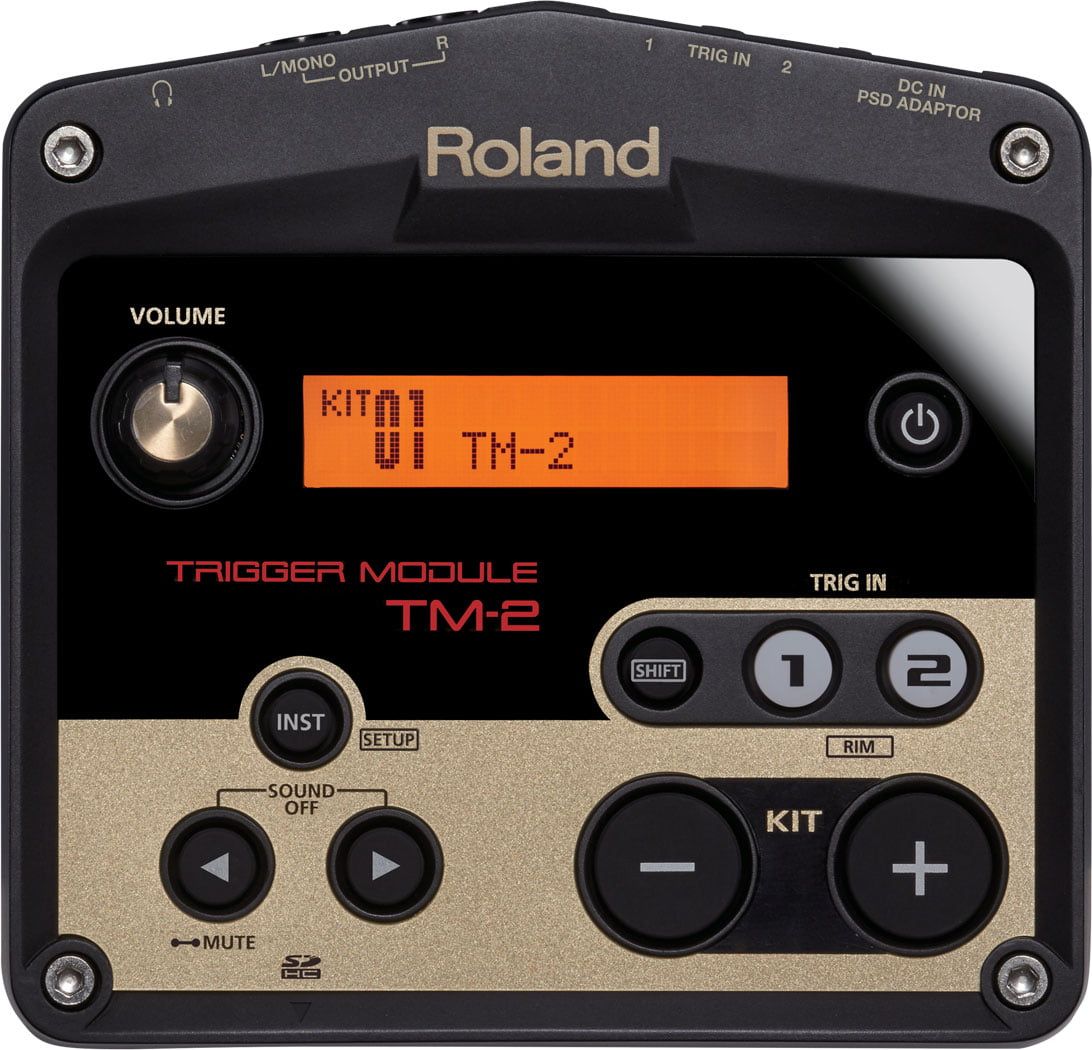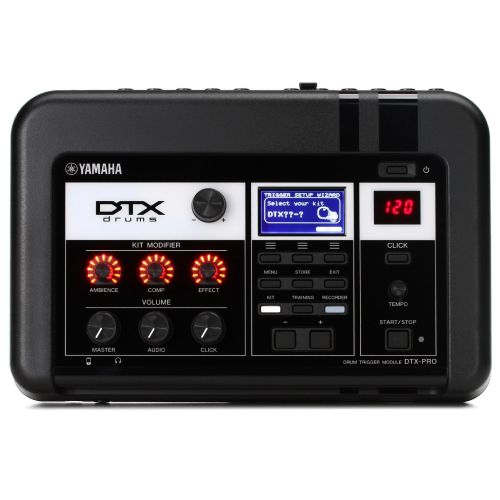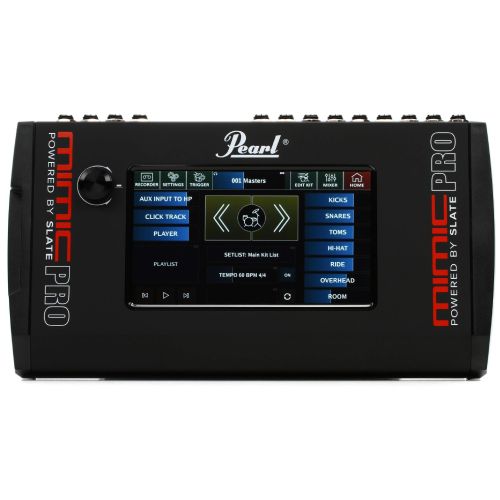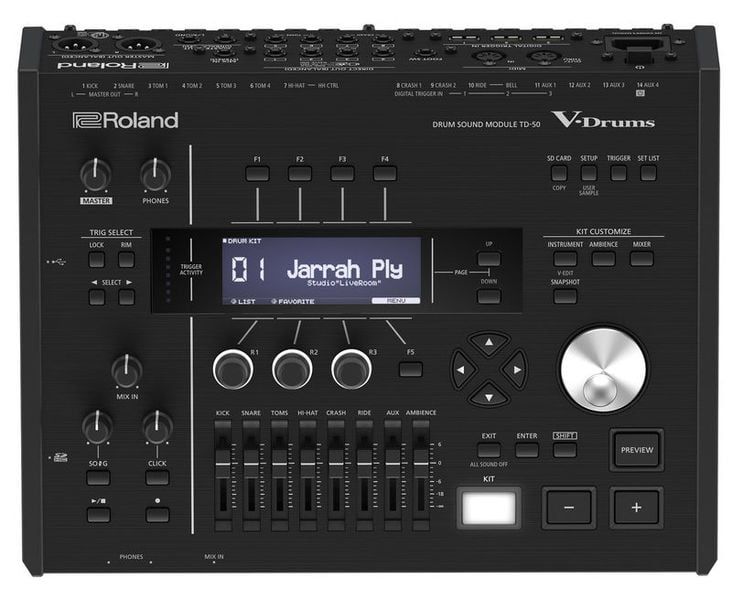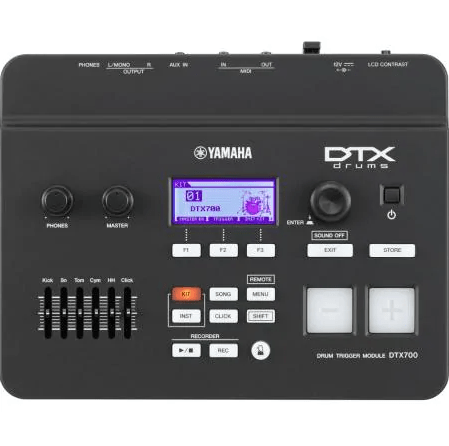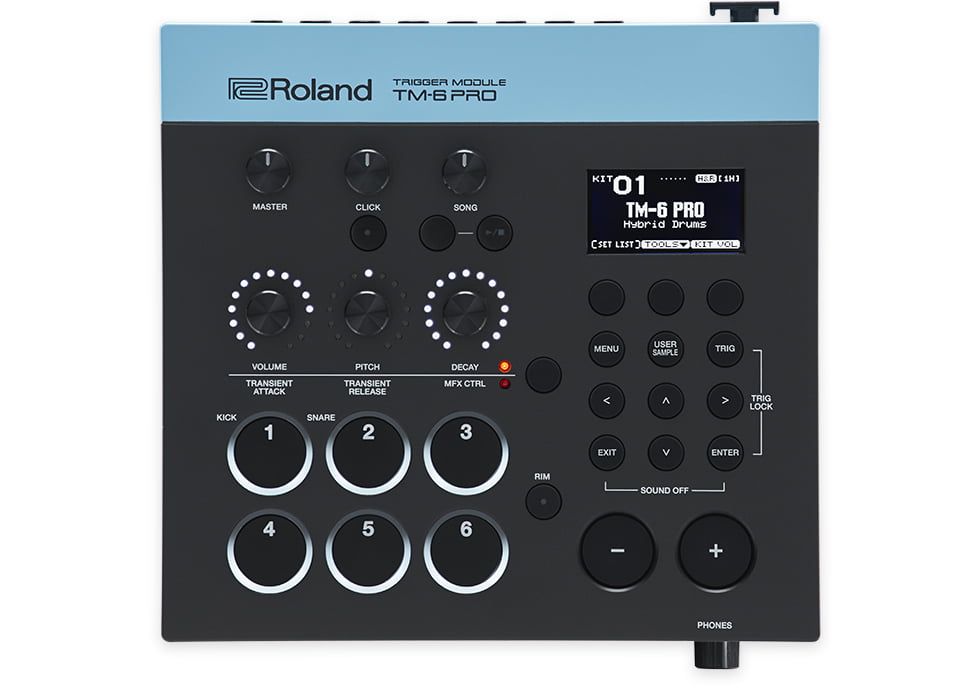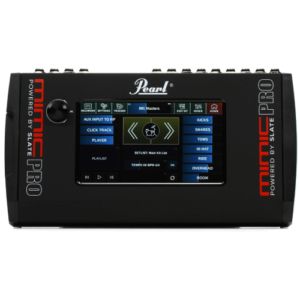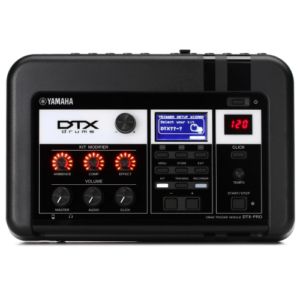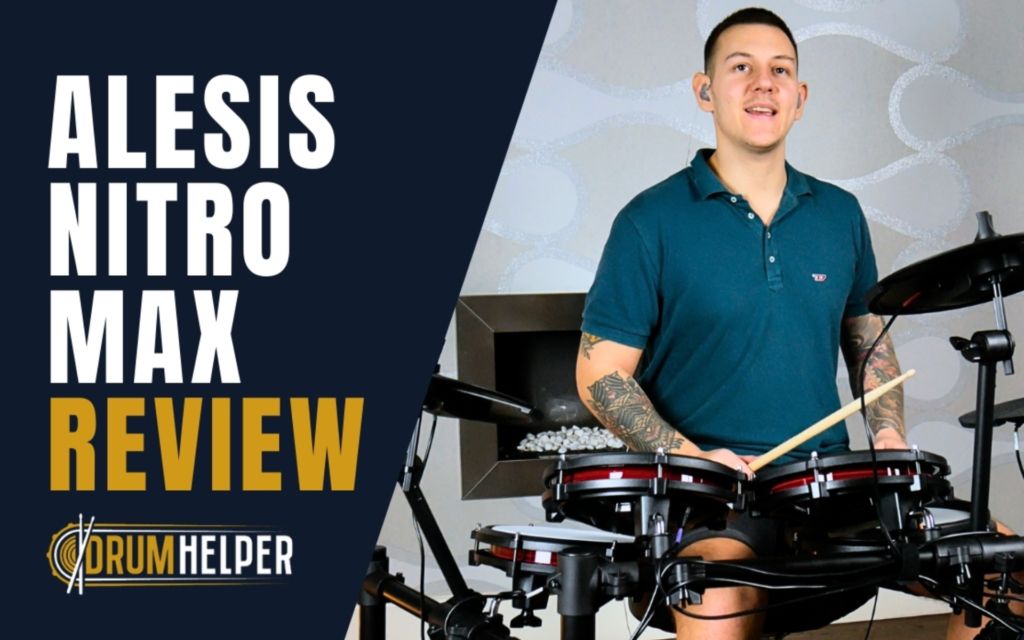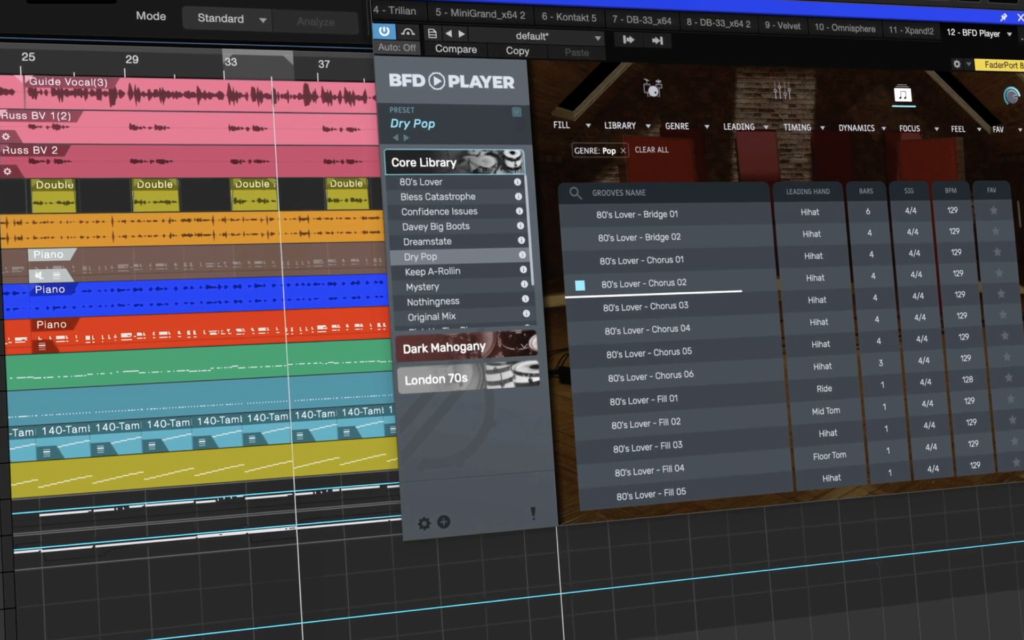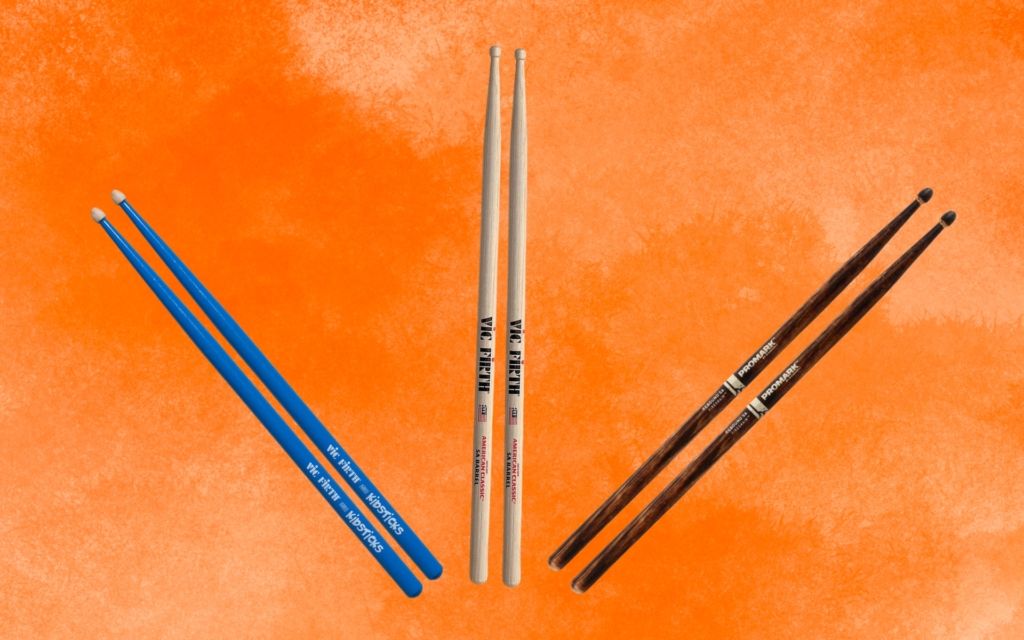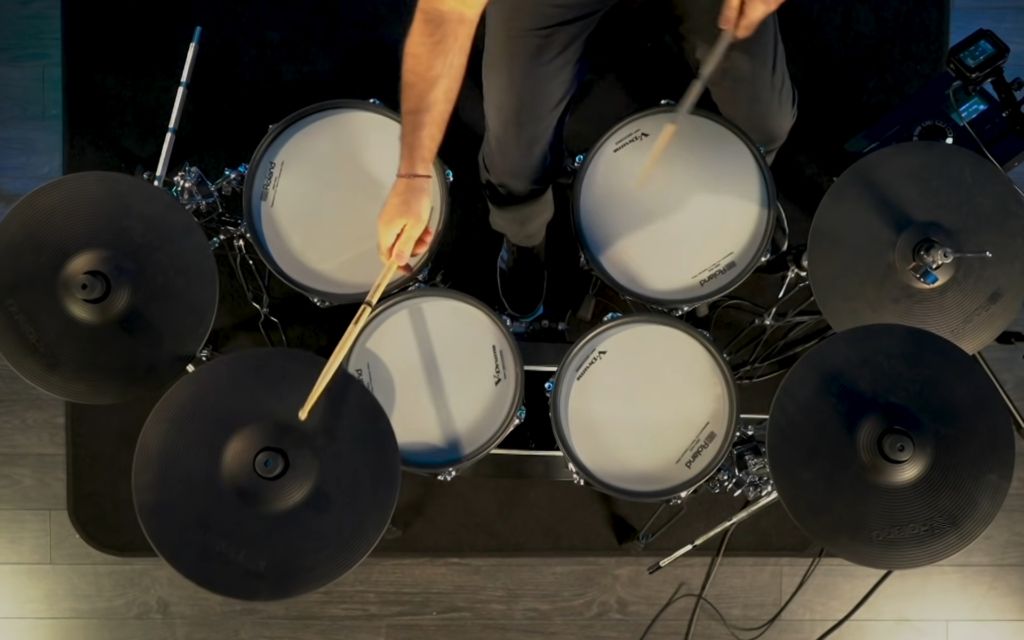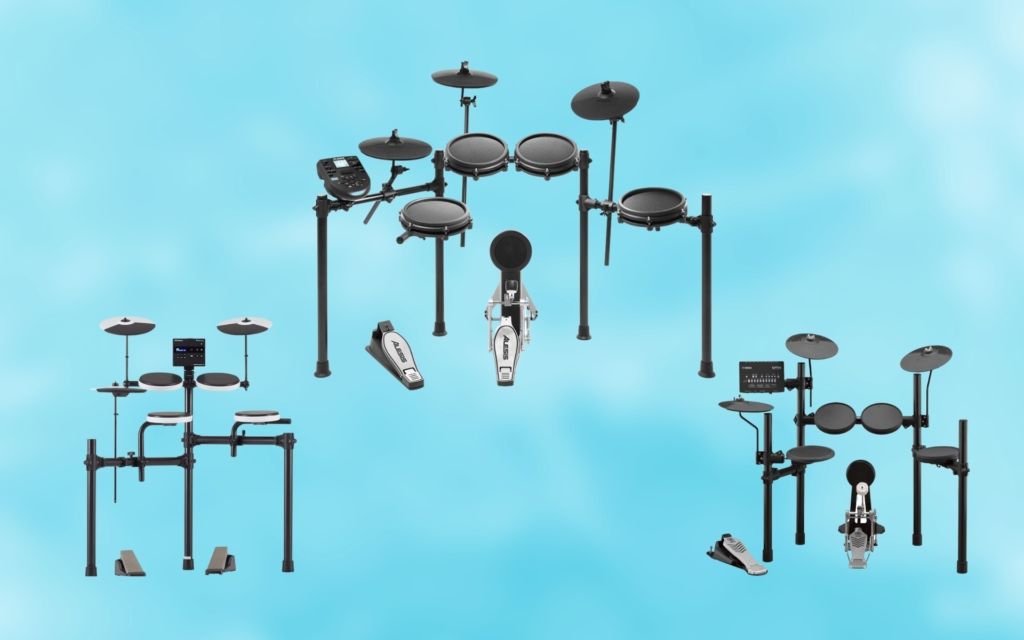I review products independently and only recommend products I would use myself. If you purchase through a link, I may earn an affiliate commission. Learn more.
Drum modules are essential tools for building hybrid drum kit setups.
In the world of modern music, where electronic drum sounds are prevalent, drum modules have become more critical than ever.
You can also buy a new drum module to replace the current one on your electronic drum set. That’s a good way of getting better sounds and features while keeping the same pads.
In this guide, we’ll look at the best drum modules that are packed with quality features and sounds. I’ve compared design, sounds, features, performance, and cost to give you my top recommendations.
In a Rush’ Round-Up
How I Tested and Selected the Best Drum Modules
I’ve been able to play almost every electronic drum kit released over the past decade, so I’ve gotten my hands on every drum module.
I used that experience to do these reviews. With some of the modules, I’ve only practiced a bit, but I’ve used others in full hybrid setups for certain gigs that I’ve been hired for.
Selecting the right drum module is a critical decision for drummers aiming to expand their sound and performance capabilities. Drawing from my extensive experience and comprehensive testing, I’ve identified crucial criteria for making the best choice.
Sound quality is a key aspect for consideration. I assess the module’s ability to produce authentic, high-quality drum and percussion sounds. I also pay attention to factors like sample quality, dynamics, and the range of available sounds.
Versatility and expandability are equally important. Drum modules should offer flexibility in terms of customization and the ability to expand your setup. I evaluate compatibility with additional pads, triggers, and software to ensure the module can grow with your needs.
Ease of use and interface design are other factors I consider. An intuitive and user-friendly interface is crucial, especially during live performances.
Whether you’re crafting unique electronic drum kits or enhancing your acoustic setup, you’ll find the perfect drum module to unlock a world of sonic possibilities.
Drum Modules Reviews
Pearl Mimic Pro Drum Module
Pearl Mimic Pro Drum Module Review
The Pearl Mimic Pro is Pearl’s only available standalone drum module, and I got time to experiment with this module when I demoed a few Pearl products at a trade show a while ago.
The one thing I was most impressed by was how the module integrates with Steven Slate Drums 5.
It’s very common for drums from VST programs to sound much better than the stock sounds on any drum module. So, Pearl put the VST into the module already so that you can get superior sounds, which I think is brilliant.
The main idea with this module is that you can use it to convert your acoustic kit into an electronic one with the use of pads and triggers. However, I also found it worked very well as a simple upgrade to any existing e-kit.
When playing with it, all the preset drum set sounds made it seem like I was playing in a world-class studio. Everything was so rich and detailed.
This is a full-on computer that you can have next to your drum kit, which is why it’s a lot pricier than most other modules. The high price tag made me hesitant at first, but I fully understood and agreed with the cost after using it.
If you need something really high-end to bring your e-kit or hybrid kit to life, I highly recommend the Pearl Mimic Pro!
Features:
- 60 preset kits from Slate Drums 5
- 16 ins and outs
- 7” multi-touch interface
Pros
- Preset kits from Steven Slate 5- one of the best drum VSTs on the market
- More ins and outs than most other drum modules, making it an ideal option for larger kits
- Highly intuitive sampling import capabilities, giving you truly limitless audio potential
- Works brilliantly as an upgrade for an e-kit that you already own
Cons
- One of the most expensive drum modules available, so it doesn’t have an incredibly wide audience
Roland TD-50 Drum Module
Roland TD-50 Drum Module Review
The Roland TD-50 Drum Module is a remarkable drumming tool, and quite simply the most advanced electronic drum module in the world.
It’s the best drum module that’s designed to be used for top-flight live performances and eclectic studio work. When testing this module out, I couldn’t help but realize how it boasts the most expressive and detailed sounds in any drum module available.
The TD-50 features an advanced processor and a newly developed Prismatic Sound Modeling that delivers Roland’s most impressive and wide-ranging sounds yet. Not only do the 100+ onboard drum kits have an unparalleled sound, but the module also offers practically limitless modeling options for every individual sound.
Loaded on the TD-50 are over 400 expressive and highly detailed instruments to play. There are also over 30 built-in multi-effects, in addition to onboard EQ, compression, and reverb for immense levels of fine-tuning sounds.
The TD-50’s high-resolution processing is able to recreate incredibly lifelike, detailed, and expressive sounds. The playing experience is immersive and inspiring.
I tried this module out on both a full electronic kit and hybrid acoustic setup. On the hybrid setup, the sound quality difference between the acoustic drums and the pads was almost seamless. On the e-kit, the playing experience was as close to an acoustic experience as I think you can get.
I love the level of detail of customization on board the TD-50. You are able to model each instrument just to your very liking. You can tune drums and change the diameters of cymbals and it will model a brand-new sound for you to save and load on the onboard memory.
The TD-50 has an insane number of ins and outs: 14 trigger inputs, 3 advanced digital trigger inputs, stereo balanced master outputs, 8 balanced direct outputs, a stereo mix-in, and an SD card input.
Roland’s TD-50 is the holy grail of electronic drum modules. Whilst it is very expensive, it’s aimed at experienced drummers and it offers unparalleled performance for studio sessions, live shows, and also for home practicing.
Pros
- Exceptional build quality and functionality
- 400-plus dynamic and expressive instruments
- Most lifelike and detailed sounds available
- Limitless sound modelling options
Cons
- Expensive price tag
- Not the most portable or compact unit
- Requires a deep knowledge of the interface
Yamaha DTX-PRO Drum Module
Yamaha DTX-PRO Drum Module Review
The Yamaha DTX-PRO is the module that comes with all of Yamaha’s DTX-6 drum sets. This is a fantastic option that offers pro-quality sounds and is extremely user-friendly.
The sound quality of this module is fantastic. The acoustic kit presets have been sampled from proper Yamaha acoustic sets, and I can really hear the detail.
I also loved how easy the module was to learn. Higher-end drum modules often have steeper learning curves, but everything on this one is really straightforward.
After fiddling with it for about an hour, I understood all the capabilities and knew exactly what I could do with it.
You can also use a Yamaha app that syncs from your phone to the module. This was another interesting part of the module, and it really set it apart from other modules, in my opinion.
While the app is mainly for doing training things on the kit, I mainly used it to record drum parts and easily get them on my computer.
Overall, this is a fantastic module with a reasonable price tag and plenty of attractive features.
Features:
- 40 user kits with 400 assignable sounds
- Three knob modifiers for audio effects
- Integrated app
Pros
- One of the easiest to use high-end drum modules that I’ve tried out
- Superb sound quality from the 40 preset kits
- Plenty of inputs to use a large drum set
- App integration makes it unique compared to other modules
Cons
- The physical design is a bit boxy for my taste, but it doesn’t affect how you can position it
Yamaha DTX700 Electronic Drum Module
Yamaha DTX700 Electronic Drum Module Review
If you are looking for an electronic drum module with a very generous and diverse range of onboard sounds, the Yamaha DTX700 could be the best drum module for you.
This electronic drum module offers a wide selection of 128 high-quality drum kits and 1268 individual drum and percussion sounds. Additionally, it also has 64MB of onboard memory for importing sound samples.
While Yamaha’s DTX-PROX drum module is the brand’s current modern option, I will always be a big fan of this module, as I used it for years with a hybrid setup. I still think it holds up very well compared to more modern technology.
The interface is simple and highly intuitive to use. It’s easy to scroll through the different drum sets and also to adjust individual sounds with the 42 onboard effects to your preferences.
The build quality of the module is excellent, and it’s thoroughly enjoyable to use. I like that it only takes up a small footprint but has a lot of functionality onboard. The DTX700 is more expensive compared with the DTX502, but it makes up for it with a wider sound library and enhanced sound modeling features.
This is one of the best drum modules to buy that can be used to build a hybrid drum set, as well as perform as a standalone electronic drum set module. It is able to accept 12 drum triggers and has USB connectivity as well as stereo master outputs.
The Yamaha DTX700 ticks all the boxes and delivers a very wide selection of lifelike tones straight out of the box. It offers great value for money and it’s brilliantly versatile. I have very few complaints about the Yamaha DTX700, and it delivers exceptional performance for its price.
Pros
- 1268 Individual drum and percussion sounds!
- 64MB on board memory for importing samples
- 42 Effects onboard
- Helpful practice features
Cons
- On board faders are not high quality
- Not a huge range of editing options for the price
Roland TM2 Electronic Drum Trigger Module
Roland TM2 Electronic Drum Trigger Module Review
The Roland TM2 Electronic Drum Trigger is a streamlined yet easy-to-use device, that is the best drum trigger module for live performances.
When I was first trying to build a hybrid setup with trigger technology, this was the tool that everyone suggested I get. I already had a Yamaha module to use, but this would have been my next option.
I’ve used the TM2 for several tours and shows when I was using a kick trigger with my band ‘Familiar Spirit’, and I was very impressed with its ease-of-use and reliability.
Roland’s TM2 module has been designed to provide a hassle-free way to build a versatile hybrid drum setup. It mounts quickly and unobtrusively onto a hi-hat stand and is able to run off the included power supply or batteries for even greater flexibility.
The build quality of the unit is excellent, and I have used this trigger module extensively in the past. It features 2 trigger inputs for external pads or acoustic drum triggers, enabling you to create a hybrid drum set up with ease.
The Roland TM2 comes equipped with 162 professional sounds right out of the box and has an SD card slot that allows you to load your own bespoke drum tones and sound effects. You can use your own sounds alongside the internal sounds and also process them with the great onboard multi-effects.
The only drawback of the TM2 is that it is limited to having only 2 trigger inputs. This means if you wanted to expand with a range of electronics in a hybrid drum set you’ll have to invest in another great drum module like the Yamaha DTX502. But if you only want to perform with a kick trigger and a single electronic pad, for example, this would be the best drum trigger module for you.
Pros
- Compact, lightweight and portable unit
- Incredibly simple to use!
- Can run off batteries or power supply for greater flexibility live
- SD card slot for loading your own sound samples
Cons
- Only 2 trigger inputs
- Can't function as an independent drum brain for electronic drums
Roland TM6 Electronic Drum Trigger Module
Roland TM6 Electronic Drum Trigger Module Review
The Roland TM6 Electronic Drum Trigger Module is the bigger brother of the Roland TM6 – and it comes pre-loaded with 500 world-class samples that are ready to use right out of the box; providing you with the tools to expand your playing horizons.
If my hybrid setup was bigger than it is now, this would be my next option after the TM2. When trying this module out, it performed just like the TM2, but it had more features and sounds available.
You can choose between a range of processed electronic tones or lifelike acoustic drum sounds to enhance and diversify your sounds! Of course, it has the functionality to allow you to load your own samples to allow you to expand your live performances.
Roland’s TM6 is a significant upgrade from the TM2 because it has 6 trigger inputs as opposed to only 2. With this greater flexibility, you can create an ambitious hybrid kit and incorporate more pads, triggers, and pedals and build your dream setup.
The build quality of the unit is excellent, and it’s the perfect electronic drum trigger module for building a hybrid drum set up for live performances. It is smart, simple and compact, and delivers a lightning-fast sound response.
The SD card port, much like the Roland TM2, allows you to reproduce signature drum tunes and samples from a record to translate into a live performance. You can also customize these imported audio samples with the 3 intuitive sound modification knobs and blend them with built-in sounds.
The Roland TM6 is one of the best drum trigger modules you can buy. It is intuitive and versatile by nature, with a large number of trigger inputs and onboard sounds that makes this a great investment.
Pros
- 80 Complete V-drum kits on board
- Three sound Modify knobs for intuitive control
- Simple and easy to use
- Generous range of quality sounds
Cons
- Not enough features to justify the price
- Can't function as an independent drum brain for electronic drums
Electronic Drum Module Buying Guide
Drum modules offer acoustic and electronic sounds that you can use when performing.
You connect electronic drum pads or drum triggers to them, and that’s how they produce electronic sounds.
They’re predominantly used in electronic, pop, metal, and hip-hop music, but many other styles have started integrating electronics into their drum sounds.
Combining electronics with an acoustic drum set with the use of drum modules, drum triggers, and electronic drum pads is known as creating a hybrid drum set.
Roland, Yamaha, and Alesis are the best electronic drum brands on the market, so they also offer the best drum modules to choose from.
When using a drum module with an acoustic drum kit, you’ll need to have cables to connect to it, along with either electronic pads or triggers to put on your drums.
Things to Consider When Buying an Electronic Drum Module
- Hybrid setup vs. electronic drum kit setup: Your choice of module will differ depending on whether you need one for an acoustic or electronic setup. Some modules, such as the Roland TM-2 and TM-6, aren’t compatible with full electronic drum kits.
- Check how the trigger module is powered: All modules come with power supplies. However, some smaller trigger modules have batteries that allow you to use them wirelessly.
- Consider your budget: As you spend more money, you’ll get more trigger inputs, sounds, and editing tools.
- Mounting: No electronic drum module comes included with mounting hardware, so you’ll need to buy that separately.
What Features to Look for in an Electronic Drum Module
Trigger Inputs
If you want a large setup with multiple electronic pads or triggers, you’ll need a module with several inputs to accommodate this.
The modules with lots of inputs are typically the ones that come from standard electronic drum sets, such as the Roland TD-50 and Yamaha DTX700.
Modules with greater inputs are also required if you want to upgrade from the module on your current electronic drum kit.
Modules with fewer inputs are used for smaller hybrid setups where you only run one or two triggers or pads. While modules with fewer inputs are limiting, they’re always much more affordable.
Trigger modules like the Roland TM-1 and TM-6 don’t have enough inputs to power complete electronic drum kits, so you need to use a dedicated electronic drum kit module for that.
Onboard Sounds
Higher-priced drum modules have more electronic sounds to choose from. The quality of the sounds is also a lot better.
However, brands like Yamaha and Roland are known for the quality of their electronic drum sounds. Their more affordable module options still have relatively high-quality sounds. There are just fewer of them available on the modules.
Sound Editing Settings
A lot of the value of many drum modules comes from sound editing tools. The ability to edit sounds is what personalizes the module for the drummer using it, giving it more playability and versatility.
Unfortunately, all the very affordable drum modules don’t have great sound editing tools. Some of them don’t have sound editing tools at all. If you don’t like some of the sounds they produce, there isn’t anything you can do to change them.
As you spend more money, you’ll get more tools to use. The Roland TD-50 is the best module when it comes to editing and control over the sounds. The Prismatic Sound Modeling Engine is unmatched.
Import Capabilities
It’s vital to get a drum module that has an SD card slot to import your own sounds. All the suggestions I’ve listed above have one, but many drum modules don’t.
Without the ability to import sounds, you may find the onboard sounds to become quite stale after a while, causing you to want a new drum module with more sound options.
Higher-quality drum modules have more space for imported sounds. They also give you more control when it comes to editing those sounds.
Also, make sure to get a module that has USB capabilities. That will allow you to connect the module to a computer to get even more sound possibilities.
Drum Module FAQs
Do All Drum Modules Work with Different Electronic Drum Pads?
Not all drum modules work with different electronic drum pads. Drum modules have varying compatibility settings, depending on when they were made.
You can use a Roland drum module to power Alesis or Yamaha drum pads. You just need to ensure that it’s compatible with those pads before buying it.
Which Brand Has the Most Modules Available?
Roland has the most individual drum modules to buy. They have dedicated trigger modules and drum modules that come with their different lines of V-Drums.
Yamaha’s latest high-tier electronic drum kits mostly use the same drum module, limiting the number of options from the brand. And Alesis drum modules are hard to find on their own.
Can You Use Drum Modules with Acoustic Drums?
Yes. Creating a hybrid setup requires mixing a drum module with an acoustic drum kit. You attach drum triggers to the drums and connect them to the module to produce electronic sounds.
Conversely, you can set electronic drum pads up around your acoustic kit and run those through the drum module.
From there, the module needs to be connected to a sound system for you to hear the electronic sounds that are being triggered.
Which Drum Modules are Best for Live Performances?
Drum modules with extensive sound editing tools are the best options for live performances. They’ll allow you to tweak the sounds to sound appropriate to the environments you play in.
You’ll be able to match the reverb that you’re getting from your acoustic drums, making the electronics sound more natural.

